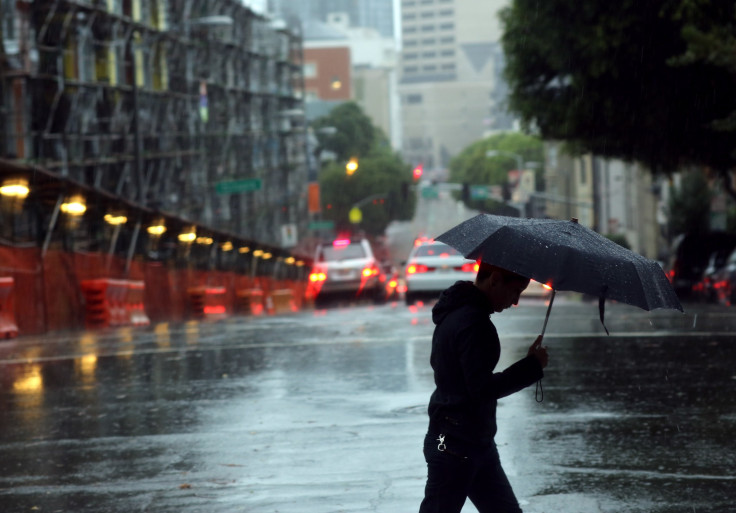California Storm 2014: ‘Pineapple Express’ Brings Mudslides, Flooding To Los Angeles, San Diego

A harsh storm that dumped heavy rain on parts of Washington and Oregon and killed two people in Northern California this week headed south early Friday, causing mudslides along the Ventura County coast. Meteorologists warned of possible flash-flooding in Los Angeles County as the storm was expected to bring drenching rain and high winds to the area Friday morning, according to the Associated Press.
The storm is expected to make its way to San Diego by noon Friday. "It is going to be a rather messy morning for people trying to get to work," Michael Palmer, lead meteorologist at The Weather Channel, told NBC. "People will have to deal with the high winds, and there could be pooling on the roadways and even some localized flooding." Meteorologists said the storm was the worst to hit California in years. The storm comes at a time when the state has otherwise been contending with some of the most severe drought conditions in California’s history, a monthslong pattern that has brought parched soil, water shortages and massive wildfires to parts of the state.
Thousands of people were evacuated in the Los Angeles suburb of Glendora late Thursday over concerns of potential and dangerous mudslides from the storm, according to the AP. The foothills surrounded Glendora were exposed by major wildfire earlier this year, making the soil vulnerable to mudslides.
The brunt of the storm hit the San Francisco Bay Area on Thursday, bringing widespread flooding of roadways, downed trees, power outages and school closures. At least two people were killed. Meteorologists described the storm, dubbed the “Pineapple Express” storm system, as a “big storm,” with some parts of the Bay Area receiving more than 9.3 inches of rain. Winds in the mountain city of Lake Tahoe reached hurricane force, topping 140 miles per hour. Waves on the lake peaked at 7 feet.
Meteorologist Ari Sarsalari described the so-called Pineapple Express weather system, which carries moisture from the Pacific tropics and dumps it on the U.S. West Coast, as a “fully loaded super soaker that just unloads onto parts of California for a couple days straight.”
© Copyright IBTimes 2025. All rights reserved.






















